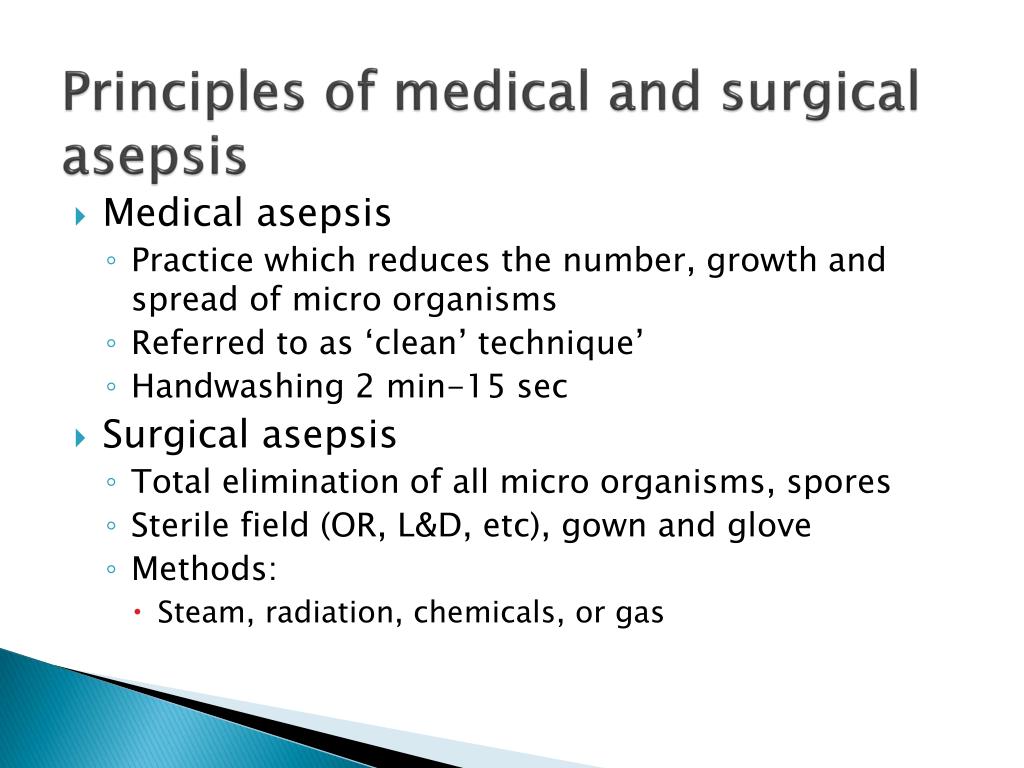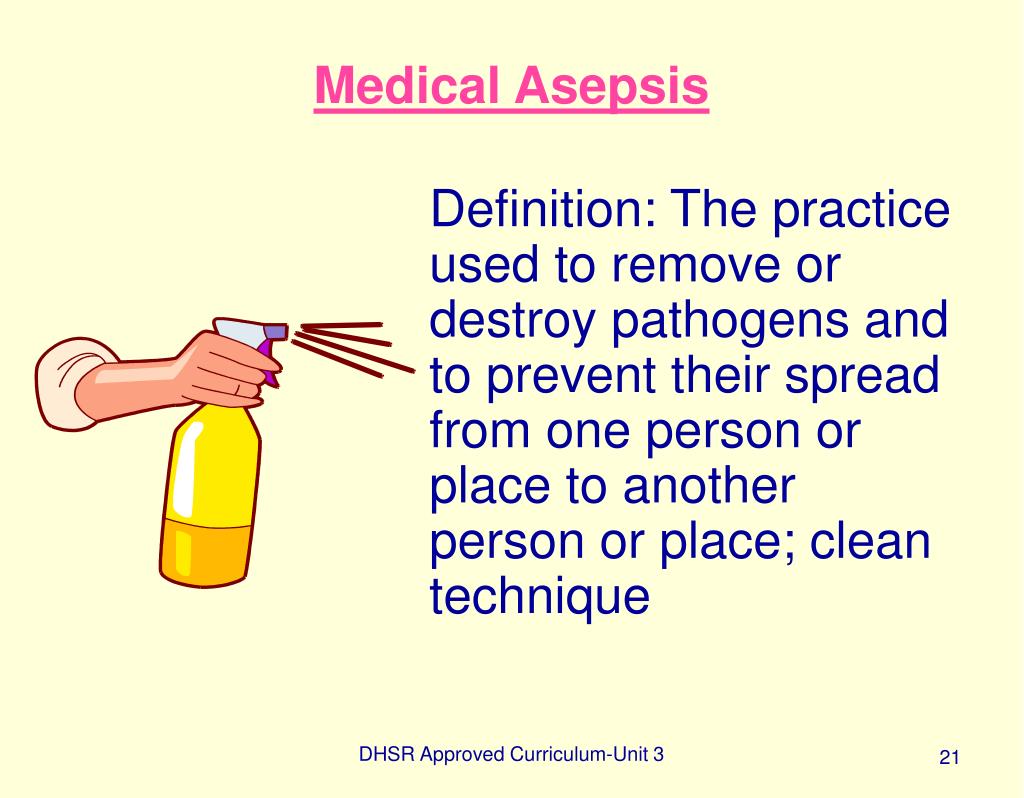
When should ANTT be used?ĪNTT needs to be efficient as well as safe, therefore Surgical-ANTT is used for complicated procedures and Standard-ANTT is used for uncomplicated procedures. Only non-contaminated equipment, referred to as “key parts” or sterile fluid should come into contact with sterile or ‘key’ sites during clinical procedures.Ī critical part of the practice is not to touch a “key part” directly or indirectly. The main principle of ANTT is that the susceptible or sterile body sites must not come into contact with non – sterile items (Rowley 2004). ANTT can be used to achieve medical asepsis. Surgical asepsis is a sterile technique, the aim being to eliminate ALL micro – organisms from an object or area during an invasive procedure. Medical asepsis refers to a clean technique to prevent and reduce the number of microorganisms. There are two main types of asepsis, medical and surgical.

ANTT has been endorsed by the Department of Health EPIC 3 guidelines (Pratt et al 2014).

the absence of pathogenic organisms or toxins from the blood or tissues (Wilson 1995). The aim of using ANTT is to prevent the introduction of micro – organisms into susceptible body sites (Rowley 2001). There is agreement in the literature that one of the most effective ways of reducing HCAI’S is through the application of a standardised ANTT for a clinical procedure (Rowley 2003, Pratt et al 2014). Patients suffer harm or may die as a result of Healthcare associated infections (HCAI’S).
#PRINCIPLES OF MEDICAL ASEPSIS SKIN#
Infection precautions such as hand cleaning and glove usage etc.Ī medical procedure that invades (enters) the body, usually by cutting or puncturing the skin or by inserting instruments into a body cavity This is achieved by a range of methods including non -touch technique, aseptic field management, basic The protection of Key-Parts and/or Key-Sites from pathogenic microorganisms.

needles, syringe tips, intravenous line connections, exposed lumens of catheters, tops of ampoules. Key-Parts are the critical parts of the procedure equipment that if contaminated are most likely to cause infection. Open wounds and insertion/puncture sites for invasive medical devices. Identifying the ‘key parts’ and ‘key sites’ of a procedure and not touching them either directly or indirectly. It defines the infection prevention method and precautions taken during invasive clinical procedures to prevent the transfer of microorganisms from the healthcare worker, procedure equipment or the immediate environment to the patient. Should be used during any procedure that bypasses the body’s natural defences. DefinitionsĪbsence of pathogenic micro-organisms or toxins from the blood or tissues (Wilson, 1995). The ANTT framework is based upon the goal of asepsis rather than sterility and the approach is gauged on the technical difficulty of each procedure rather than the diagnosis or age of the patient. This standardised approach, developed in University College Hospital (UCH) London, has been shown to significantly improve the aseptic technique of healthcare workers and reduce the numbers of Healthcare Associated Infections (HCAIs).ĪNTT is a core nursing and medical skill that defines the infection prevention and control methods and precautions necessary during invasive clinical procedures to prevent the transfer of microorganisms to ‘key’ or sterile body sites from healthcare professionals, procedure equipment or the immediate environment to a patient. Increase patient safety by reducing the risk of introducing infection into a susceptible body site during procedures such as intravenous therapy, wound care and urinary catheterisation.Īseptic non-touch technique uses a defined framework and is a relatively new approach to undertaking aseptic techniques.Support health care workers to practice safely and effectively.ANTT is an international set of principles aimed to:

ANTT refers to Aseptic non – touch technique.


 0 kommentar(er)
0 kommentar(er)
